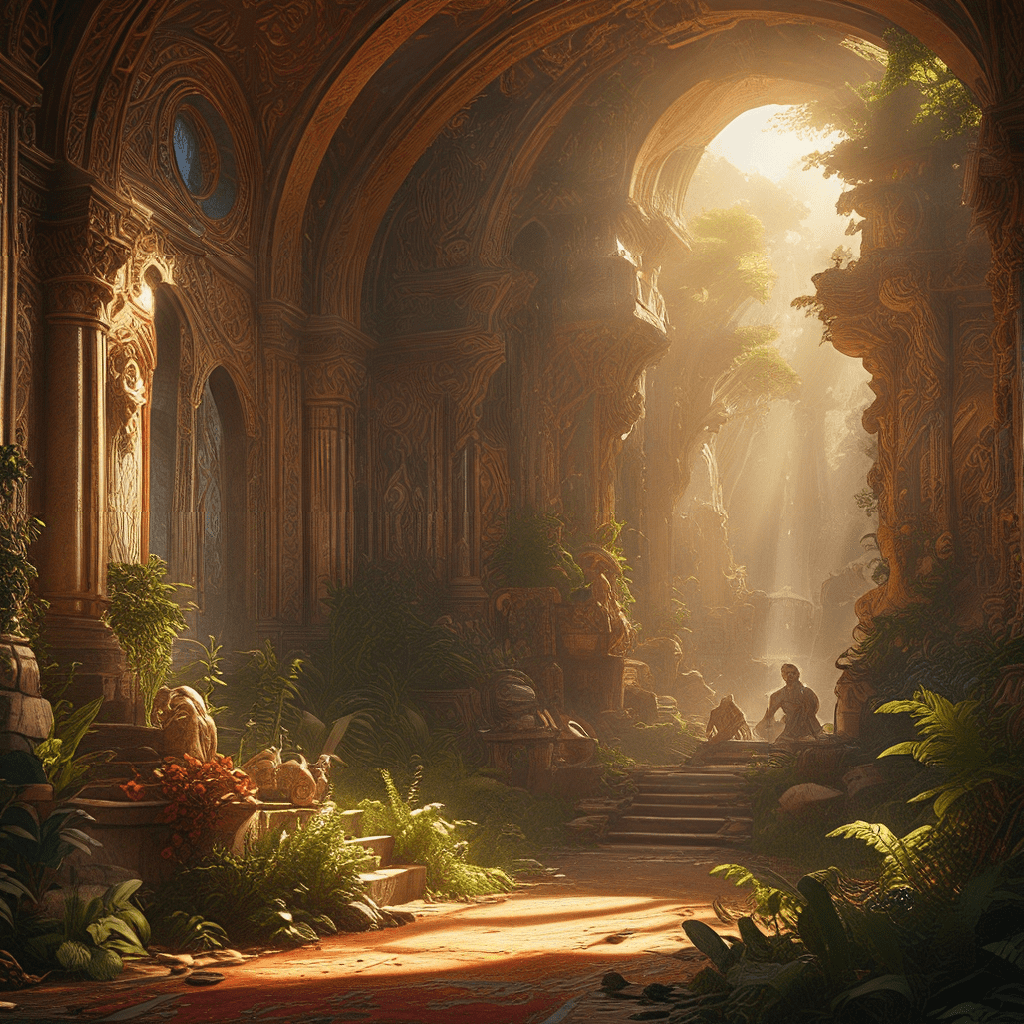The Mythological Tapestry: Connecting Cultures Through Creation Stories – Egyptian Mythology
1. Introduction: The Power of Creation Myths
Across the globe, cultures have woven intricate tales to explain the origins of the world and humanity. These stories, known as creation myths, offer a window into a civilization’s deepest beliefs, values, and understanding of the universe. They provide a sense of identity and belonging, explaining where we come from and how we fit into the grand scheme of things. Creation myths are more than just stories; they are powerful narratives that shape our worldview and our place in the world.
2. The Egyptian Cosmology: A Universe of Order and Balance
Ancient Egyptian mythology paints a picture of a universe governed by order, harmony, and justice. This fundamental principle, known as Ma’at, permeates Egyptian beliefs and practices. In the beginning, there was only a vast expanse of primordial waters called Nun, representing chaos and potentiality. From this watery abyss emerged the world, a creation born from order imposed on chaos.
The Egyptians believed that the universe was structured like a grand cosmic order, with the earth as a flat disc surrounded by a sky goddess named Nut. The sun god Ra journeyed across the sky in his solar bark, bringing light and life to the world. Beneath the earth lay the underworld, a realm of darkness and judgment. This intricate cosmic order, maintained by the actions of the gods, was an essential part of their worldview.
3. The Creation Myth of Atum: Self-Creation from the Void
One of the most prominent creation myths in Egyptian mythology tells the story of Atum, the self-created god. Emerging from the primordial waters of Nun, Atum existed as a solitary being in a state of utter emptiness. Through a process of self-creation, Atum brought himself into existence, becoming the sole source of all creation.
Atum is often depicted as a self-sufficient being, self-birthing through his own power. He is considered the original deity, the source of all other gods and goddesses. By uttering words of power, Atum brought forth the sun, the moon, and other celestial bodies, establishing the foundation of the cosmos.
The creation of Atum from the void reflects the Egyptian belief in the power of order and the ability of the divine to bring forth existence from non-existence. This myth also highlights the importance of the sun god Ra, as Atum is often associated with Ra and considered a manifestation of the sun god’s power.
4. The Heliopolitan Ennead: A Family of Gods
The Heliopolitan Ennead, meaning “nine,” is a group of nine major gods who played crucial roles in Egyptian mythology and religion. This pantheon, centered around the city of Heliopolis, represents a family of gods who emerged from Atum. The Ennead includes Atum himself, as well as his children: Shu (god of air), Tefnut (goddess of moisture), Geb (god of earth), Nut (goddess of sky), Osiris (god of the underworld), Isis (goddess of magic and motherhood), Seth (god of chaos), and Nephthys (goddess of funerary rites).
Each god and goddess in the Heliopolitan Ennead had unique responsibilities and powers, contributing to the maintenance of cosmic order. The relationships within this family, including rivalries and alliances, shaped the stories and myths surrounding these deities. The importance of the Heliopolitan Ennead is evident in the vast amount of artwork, temples, and texts dedicated to these gods, showcasing their central role in Egyptian belief systems.
5. The Myth of Ra and the Creation of Humanity
In another prominent Egyptian creation myth, Ra, the sun god, is credited with bringing light to the world. His emergence from the primordial waters marked the beginning of the day, ushering in a new era of existence. The creation of humanity is closely tied to Ra’s power and essence.
There are different versions of this myth, but the most common one suggests that Ra created humans from his own tears or saliva. This act signifies the divine origin of humanity, emphasizing the connection between humans and the gods. Ra’s power and influence over the world, particularly his role as the sun god, made him a central figure in Egyptian mythology and religion.
6. The Role of the Divine Feminine in Creation
While the male gods, like Atum and Ra, are often celebrated as creators, the divine feminine plays a significant role in Egyptian creation myths. The goddess Nut, for instance, is depicted as the sky goddess, stretching her body across the heavens to support the stars and celestial bodies. Nut’s role highlights the nurturing and life-giving aspects of the feminine principle.
Another important goddess associated with creation is Hathor, the goddess of motherhood and fertility. Her connection to the cow, a symbol of nurturing and abundance, emphasizes her role in fostering life and providing sustenance. These goddesses, along with others like Isis and Nephthys, demonstrate the crucial role of the feminine in shaping the cosmos and bringing forth new life.
7. The Underworld and the Journey of the Soul
The Egyptians believed in an afterlife, a realm of judgment and potential rebirth. The underworld, known as Duat, was ruled by Osiris, the god of the dead. The journey to the underworld was a significant part of Egyptian belief, as it represented the transition from earthly life to the afterlife.
The creation of Duat is often attributed to the gods, specifically Osiris, who established the rules and procedures for judging the souls of the deceased. The process involved weighing the hearts of the dead against the feather of Ma’at, symbolizing justice and order. The underworld, like other aspects of the cosmos, reflects the Egyptian belief in balance and the importance of maintaining order, even after death.




